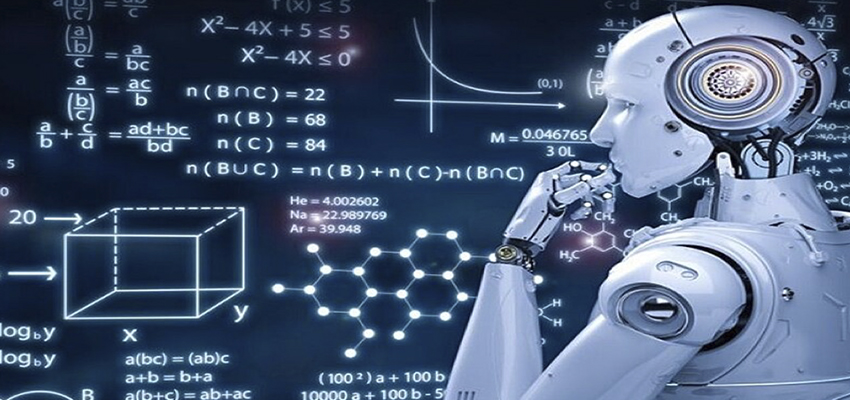
As artificial intelligence becomes more integrated into our everyday lives, tools like AI paraphrasers, content generators, and chatbots are increasingly used to assist in everything from writing assignments to crafting blog posts. But while these tools offer convenience, they also raise concerns about the authenticity and originality of the content produced. This is where a good AI detector comes into play.
If you want to ensure the content you’re dealing with is truly human-written or detect whether AI-generated content has been used, a good AI detector is essential. Let’s dive into what makes an AI detector effective, why it’s necessary, and how it can help protect the integrity of content.
What is a Good AI Detector?
A good AI detector is a tool that identifies whether content has been generated by artificial intelligence. These detectors analyze text to determine patterns, structures, and specific language elements typically found in AI-produced content. By doing so, they can highlight content that may have been written by a machine rather than a human, helping users verify originality.
In a world where AI-generated content is rapidly growing, these detectors are crucial for educators, content creators, and anyone who values the authenticity of their work. They serve as a safeguard against unintentional plagiarism or reliance on AI-driven tools.
Why Do You Need a Good AI Detector?
With the increasing sophistication of AI tools, it can be difficult to tell the difference between AI-generated and human-created content. A good AI detector helps in the following ways:
Ensuring Authenticity: Whether you’re reviewing student essays, business reports, or blog posts, a good AI detector helps you ensure that the content was written by a human and not generated by a machine.
Preventing AI Misuse: In academic and professional environments, passing off AI-generated content as original can be seen as a form of plagiarism. A good AI detector helps institutions and businesses maintain ethical standards.
Quality Control: AI-generated content may lack the nuance, emotional depth, or creativity of human writing. By using an AI detector, you can assess whether the content meets your quality standards and reflects human thought.
How Does a Good AI Detector Work?
A good AI detector analyzes the text using advanced machine learning algorithms. These algorithms are trained to recognize specific patterns, such as the repetition of certain phrases, unnatural sentence structures, or the overuse of certain vocabulary that is common in AI-generated content.
Here’s how a typical AI detector operates:
Text Analysis: The tool scans the submitted content, breaking it down into individual sentences, phrases, and words.
Pattern Recognition: It looks for repetitive patterns or language constructs that are common in AI-generated content, such as overly structured sentences or unnatural transitions between ideas.
Probability Scoring: Based on its analysis, the AI detector assigns a probability score to the content, indicating how likely it is to have been generated by an AI. The higher the score, the more likely it is that the text was AI-created.
Reporting: Finally, the detector generates a report, highlighting sections of the content that may have been influenced by AI.
Key Features of a Good AI Detector

When selecting a good AI detector, certain features are critical to ensure accuracy and usability. Here are some characteristics to look for:
High Accuracy
The most important aspect of any AI detector is its accuracy. A good AI detector should provide precise results with minimal false positives. It should be able to accurately distinguish between human-generated and AI-generated content even when the differences are subtle.
Fast Processing
Time is of the essence, especially for educators or professionals reviewing large volumes of content. A good AI detector processes text quickly and delivers results in a timely manner, allowing users to move forward with their tasks without delay.
Easy-to-Use Interface
User-friendly design is key. The best AI detectors are easy to use, even for those who aren’t tech-savvy. A simple upload or copy-paste function for content, followed by a clear report, makes the tool accessible to everyone.
Compatibility with Multiple Formats
A good AI detector should support various content formats, including PDFs, Word documents, and text files. This versatility ensures that you can analyze content from different sources without the need for conversion.
Regular Updates
AI technologies evolve rapidly, and so do AI-generated content patterns. A good AI detector should be regularly updated to keep up with the latest advancements in AI writing tools. This ensures the detector remains effective as new AI systems are developed.
Best Practices for Using a Good AI Detector

To get the most out of a good AI detector, follow these simple best practices:
Use It Early in the Process
If you’re an educator or content editor, run the content through the detector early in the review process. This helps you catch AI-generated content before it’s published or graded, giving you time to address any issues.
Combine It with Other Tools
While a good AI detector is highly effective, it’s not infallible. Combine it with plagiarism checkers and manual review processes to ensure the highest level of content originality.
Educate Others About Its Use
If you’re working in an educational or professional environment, make sure that others understand the importance of using an AI detector. Teaching students, colleagues, or employees about the tool can promote ethical content creation and discourage misuse of AI writing systems.

Top Recommendations for Good AI Detectors
Here are a few highly recommended AI detectors that have proven to be accurate and reliable:
GPT-3 Detector by OpenAI
This AI detector is specifically designed to recognize content generated by the GPT-3 model, one of the most advanced AI systems currently available. Its accuracy is impressive, and it’s constantly updated to reflect the latest developments in AI writing.
AI Text Classifier
Offered by OpenAI, the AI Text Classifier is a free tool that helps users detect whether content was generated by AI. It’s simple, effective, and easy to use, making it a top choice for students and professionals alike.
Turnitin
Widely used in academic settings, Turnitin now includes AI detection features to identify AI-generated content. It’s a comprehensive tool that combines plagiarism detection with AI detection, ensuring content authenticity.
In an era where AI-generated content is becoming more prevalent, the need for a good AI detector is more important than ever. Whether you’re an educator, content creator, or professional, these tools can help you maintain the integrity of your work, prevent unethical content practices, and ensure that the text you’re reviewing is truly original. A good AI detector is your safeguard in a world where human and machine-generated content often blend together.
FAQs About The Good AI Detectors
Can a good AI detector identify all types of AI-generated content?
A good AI detector can identify most AI-generated content, but it may not catch everything. Using multiple tools increases accuracy.
Is AI-generated content considered plagiarism?
AI-generated content isn’t necessarily plagiarism, but passing it off as original human work can be unethical.
Are free AI detectors as reliable as paid ones?
Free AI detectors can be effective but often lack the advanced features and accuracy of paid versions.
How can I ensure content is human-written?
Use a good AI detector alongside plagiarism checkers and manual reviews to ensure the content is original and human-written.
How often should AI detectors be updated?
AI detectors should be updated regularly to keep up with advances in AI writing technologies.







